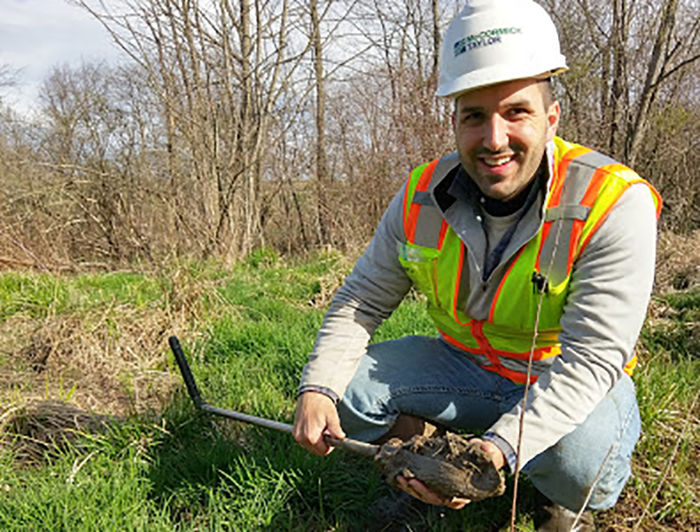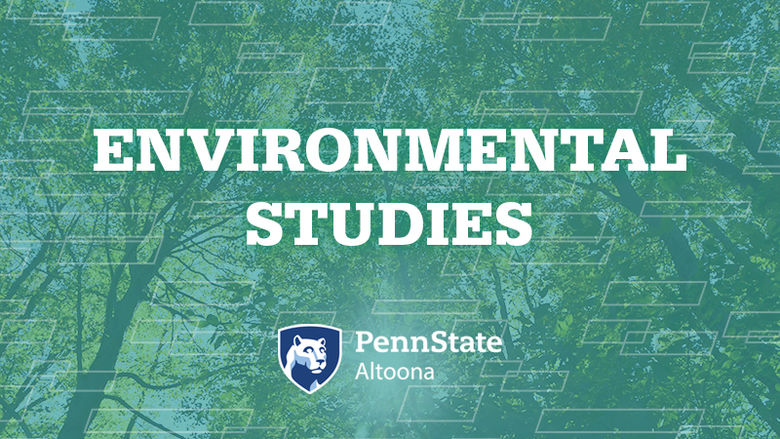Finding freedom to explore his niche is what drew Garrett Harris (’13) to the Environmental Studies program. Internships and undergraduate research then became key contributors to his current career path.
Like many of our alumni, Garrett Harris recalls that it was the broad range of courses that the degree offered, which led to his enrollment in the Environmental Studies major. He wasn’t entirely sure what he wanted to do; he just wanted to do something in the outdoors. “The ENVST degree allowed me to explore all aspects of the environmental field without specifically tying me into a specific niche (i.e. wildlife, fisheries, water resources, etc.).” Garrett graduated with a B.A. in ENVST and a minor in Biology in 2013.
The niche he eventually found, through internship experiences as well as specific, rigorous fieldwork applying, GIS skills to wetland delineation, carved Garrett’s path. The program stresses and highlights the impact of the internship experience to all its students. However students do have a choice whether they want to complete an internship or independent study to count for their 300-level field experience. Garrett chose both, and the payoff was worth it.
Of his favorite memories from his PSU Altoona days, two courses came to mind. First, was experimental biology an intensive 5-credit field oriented course that covered diverse sampling methods including wetland delineation, and timber stand evaluations. The course took students outside to experience things such as electroshocking fish in Spring Run and a field trip to Stone Valley to perform salamander transect studies. Additionally, he completed an independent study under the direction of Dr. Julian and Dr. Dolney and this is where his interests were piqued. Together they looked at “Predictive Models for the Occurrence of Green and Wood frogs Using In-pond Characteristics and Wetland Isolation.” It was time-intensive, taking more out of classroom time than the norm, but its benefits were great. “At the completion of the course I was able to present our findings at a national conference as a poster submittal. Furthermore, the rigors of the course helped prepare me for both my advanced level coursework as well as [helped me to] understand the expectations of technical reports which I currently submit to federal/ state agencies.”
Of his internship experiences, Garrett very truthfully, tells how sometimes it’s a great opportunity to discover what you don’t want to do. Luckily for him, taking on two internships allowed that, and what he learned still helps with his work today. His first internship was with Appleton Papers as an environmental engineer aide. He performed hazardous waste inspections, mechanical monitoring and developed safety protocols and emergency response plans. The best part of this job was sampling macroinvertebrates for water quality at stream outflows.
Garrett also took an internship with Shavers Creek Environmental Center as a GIS intern. Part of this job was designing and developing a working mapbook for managing their vernal pool GIS database. He also got to conduct GIS analyses that helped identify vernal pools, as well as helped with species field monitoring and surveys. After the internship experience and graduation, Garrett continued to assist Dr. Mahan and Dr. Julian with components of their research through various mapping and surveying needs – including work at the Flight 93 National Memorial. He even got to help graduate students at University Park with their research field surveys. Within about eight months he was hired at McCormick Taylor (2014), an engineering consulting firm in Harrisburg, PA where he currently is employed as an Environmental Scientist. Now, he is primarily responsible for performing wetland and watercourse delineations, wetland functional assessments, and watercourse quality assessments. Additionally, he prepares NEPA documentation for environmental clearances and does environmental compliance construction monitoring. He also performs threatened and endangered (T&E) species habitat evaluations and population presence/absence surveys. This latter work greatly interested Garrett and, in 2019, he decided to pursue a Master’s Degree in Wildlife Science at Shippensburg University while working full-time.
What advice does Garrett give to anyone currently working through the major? He has two pieces, actually. “Take advantage of the extra work opportunities that any professor offers you. One of the best decisions that I made as an undergrad was agreeing to help Dr. Julian with some GIS mapping needs for research he was conducting. I feel this was a foundational catalyst for all my other experiential opportunities, as it helped lead into my internship, my work with other professors, and my independent study. Also, network and get yourself known! Talk to professors and industry professionals, attend conferences and/or volunteer with non-profit organizations within the niche that you are interested in pursuing. Opportunities and experiences aren’t just going to fall into your lap; you have to make them happen.”
Written by Erin Nachtman (ENVST ‘10)




